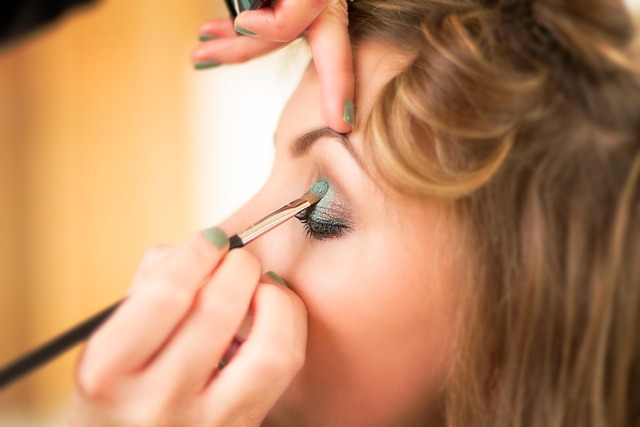The Art of Contouring: Sculpting Faces with Light and Shadow
Contouring has become a cornerstone technique in modern makeup artistry, transforming the way we approach facial enhancement. This method of sculpting and defining features using strategic application of light and dark tones has roots in theatrical makeup but has evolved into a mainstream beauty practice. From its origins on stage to its current ubiquity in everyday makeup routines, contouring has undergone significant changes in technique, products, and cultural perception. The rise of social media and beauty influencers has propelled contouring into the spotlight, making it a subject of both fascination and debate in the beauty community.

As photography and film emerged, makeup artists adapted these techniques for the camera. The black-and-white medium required even more pronounced contouring to capture facial structure effectively. Hollywood’s golden age saw the refinement of these methods, with makeup artists like Max Factor pioneering techniques that would influence beauty standards for decades to come.
The Drag Queen Influence
While theatrical roots laid the foundation, the modern contouring revolution owes much to the drag queen community. Drag performers elevated contouring to an art form, using it to dramatically reshape facial features and create exaggerated, feminine silhouettes. Their bold techniques and fearless experimentation pushed the boundaries of what was possible with makeup.
As drag culture gained mainstream visibility in the late 20th and early 21st centuries, its influence on beauty trends became increasingly apparent. Makeup artists began adapting drag contouring techniques for everyday wear, softening the dramatic effects while retaining the transformative power.
The Kim Kardashian Effect
The widespread popularity of contouring in the 2010s is often attributed to Kim Kardashian and her makeup artist, Mario Dedivanovic. Kardashian’s heavily contoured looks became iconic, sparking a beauty trend that would dominate social media and red carpets alike. Her openness about her makeup routine, including the release of step-by-step tutorials, demystified the process for millions of fans.
This mainstream adoption led to an explosion in contouring products and tools. Makeup brands rushed to release contour kits, sculpting sticks, and specialized brushes to meet the growing demand. The technique, once reserved for professional makeup artists, became accessible to the average consumer.
Technological Advancements in Contouring Products
As contouring gained popularity, the beauty industry responded with innovative product formulations. Traditional powder contours were joined by cream and liquid options, offering varying levels of intensity and ease of application. Brands began developing contour shades for a wider range of skin tones, addressing the long-standing issue of limited color options for deeper complexions.
The introduction of dual-ended contour sticks and all-in-one palettes simplified the process further, making it more approachable for beginners. Advanced formulas with light-diffusing particles and skin-caring ingredients emerged, blurring the line between makeup and skincare.
The Backlash and Evolution
As with many trends that reach saturation point, contouring faced backlash. Critics argued that the heavy, sculpted look promoted unrealistic beauty standards and erased individual features. This criticism coincided with a broader shift towards more natural, minimal makeup looks.
In response, the technique evolved. “Soft sculpting” emerged as a subtler alternative, using sheerer products and gentler application methods to enhance facial structure without dramatically altering it. This approach aligned with the growing preference for a more natural, “no-makeup makeup” aesthetic.
Contouring in the Digital Age
The rise of social media platforms, particularly Instagram and TikTok, has had a profound impact on contouring trends. These visual platforms have become breeding grounds for new techniques, product recommendations, and viral beauty hacks. The ability to instantly share before-and-after transformations has kept contouring at the forefront of beauty conversations.
However, the prevalence of filters and editing apps has also complicated the perception of contouring results. The line between achievable makeup looks and digitally enhanced images has blurred, leading to discussions about authenticity and realistic beauty expectations in the digital age.
Cultural and Ethical Considerations
The global popularity of contouring has raised important discussions about cultural appropriation and the homogenization of beauty standards. Critics argue that certain contouring techniques, particularly those that alter facial features associated with specific ethnicities, can perpetuate problematic beauty ideals.
Additionally, the environmental impact of the increased production and consumption of contouring products has come under scrutiny. This has led to a growing interest in sustainable and multi-use makeup options that can achieve similar effects with less waste.
The Future of Contouring
As beauty trends continue to evolve, contouring remains a dynamic and adaptable technique. The future of contouring is likely to see a continued emphasis on personalization, with AI and augmented reality technologies offering customized recommendations based on individual face shapes and preferences.
The integration of skincare benefits into contouring products is expected to grow, reflecting the ongoing merger of makeup and skincare categories. Sustainable and clean beauty formulations will likely play a larger role, addressing consumer demands for environmentally conscious options.
Ultimately, contouring’s enduring appeal lies in its transformative power and adaptability. From its theatrical origins to its current status as a beauty staple, contouring has proven its ability to evolve with changing tastes and technologies, ensuring its place in the ever-changing landscape of beauty trends.




